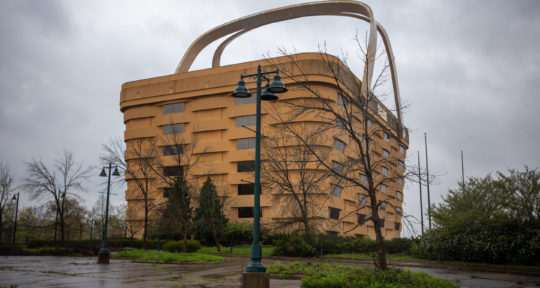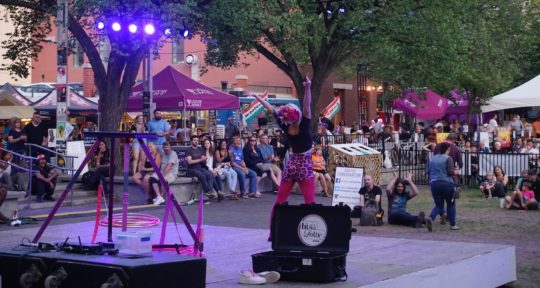Buffalo, New York, has a more diverse architectural legacy than some people may realize. From the historic 850-acre Olmsted Parks System to the elaborate Art Deco-style City Hall situated proudly in the heart of downtown, Buffalo packs a wide range of architecture into one modest Rust Belt city.
Even though I’ve lived in Buffalo for most of life, I only recently visited the site that tops the list of the city’s must-see architecture: Frank Lloyd Wright’s Darwin Martin House. But it’s not just Wright’s immaculate architecture—or the full restoration completed last year—that draws me to Buffalo’s cozy Parkside neighborhood on a scorching-hot July afternoon. It’s the new public art installation nestled quietly within the property.
The result of a collaboration between the Martin House and Buffalo’s renowned Albright-Knox Art Gallery, The Space Between is a new interactive art exhibit located on the Martin House grounds. With Wright’s architectural masterpiece serving as an impressive backdrop, seven ceramic sculptures created by Japanese artist Jun Kaneko were installed throughout the more than 14,000-square-foot lot last month. Each one features soft, rounded edges, vibrant colors, and dazzling abstract patterns that blend sculpture, architecture, and nature.
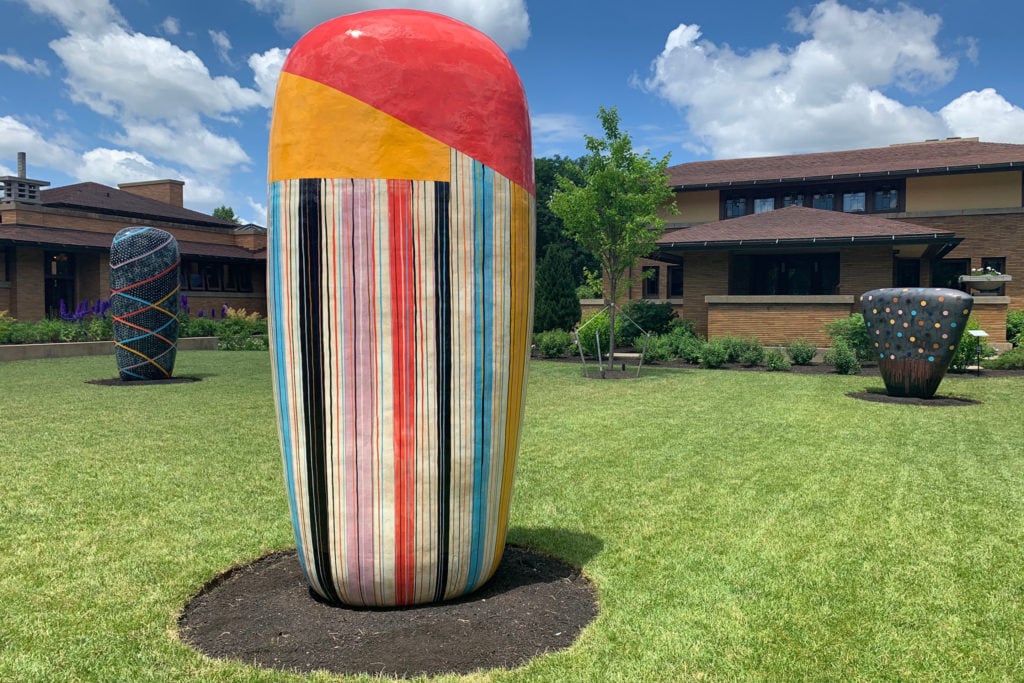
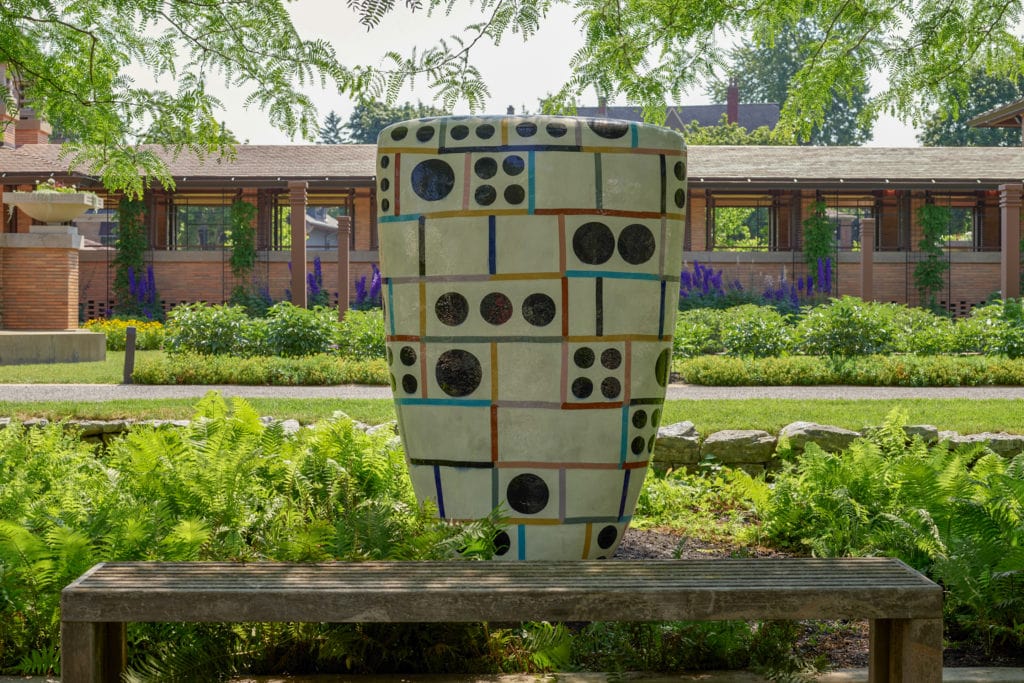
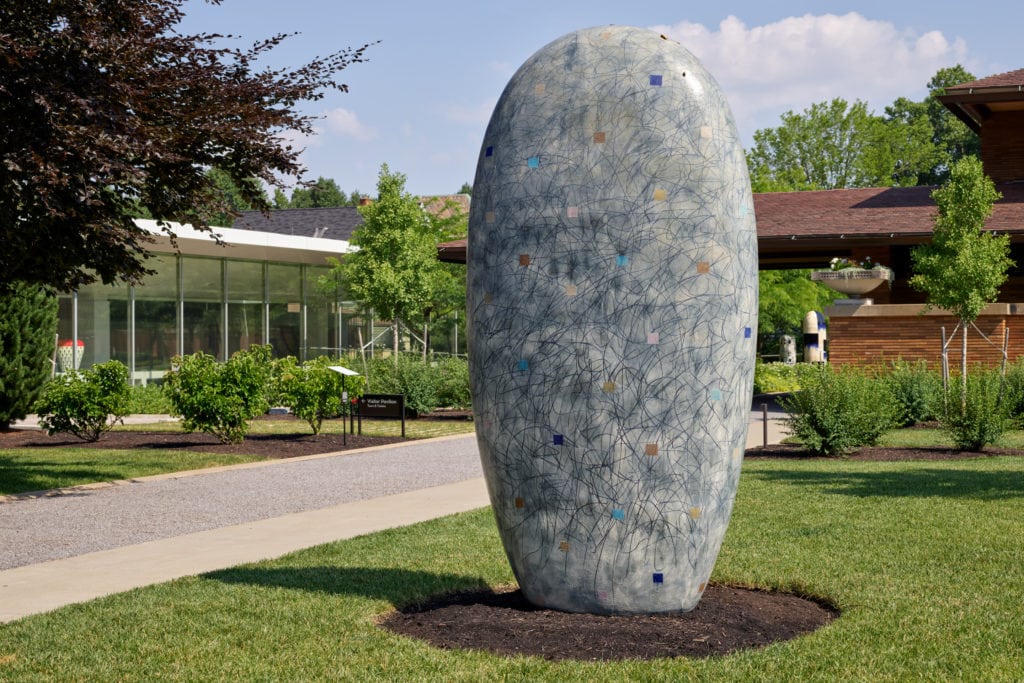
Architecture meets art
I begin my self-guided tour near the house’s floricycle, where three of the seven dangos sculptures—named after a Japanese term for dumplings—are set up in a triangular formation on the lawn. From a distance, the sculptures have a commanding presence; the tallest of the group stands at more than 10 feet, and the other two are only slightly smaller. As I get closer, I notice small details that aren’t detectable from afar: the subtle web of cracks that span the sculptures’ surfaces, and how their colors seem to bleed into one another in a way that almost looks like dripping paint.
These “imperfections” are actually quite common in Kaneko’s sculptures. They’re created through an innovative, yet wildly unpredictable method called “strike firing,” a process in which copper, iron, and other metal elements are applied to the clay and then fired in a large kiln for multiple days at a time. Because the metals burn at a different rate than the other components, airflow and natural gas levels can be manipulated to create interesting color effects and patterns—but one misstep in the process can be extremely costly.
“As you may know with ceramics, sometimes you open the kiln and those things are just shattered,” explains Aaron Ott, public art curator for the Albright-Knox Art Gallery. “So the sheer risk Kaneko takes is what really makes his work stand out. These are some of the world’s largest strike-fired objects, and they have this presence to them not just because of their scale, but because the life they’ve lived is really evident.”
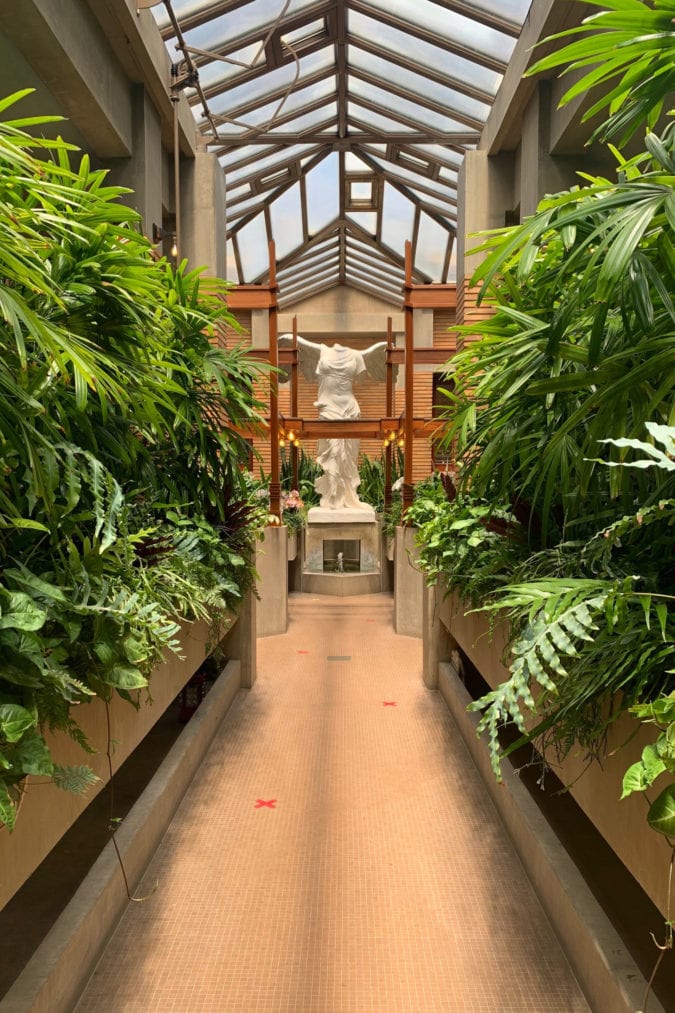
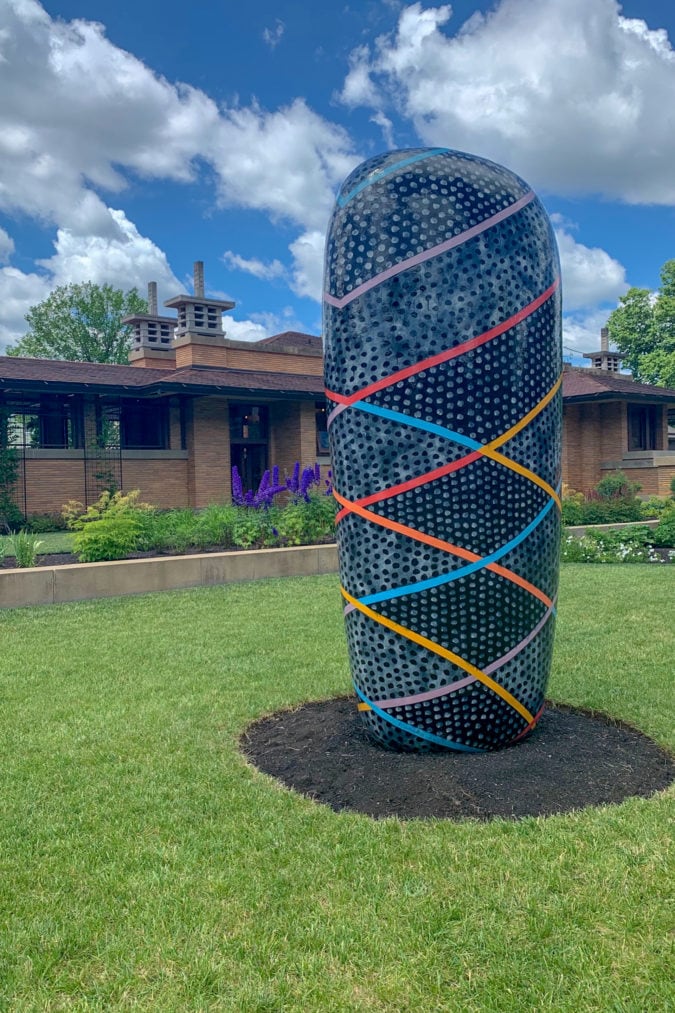
The power of ma
As I move around the outdoor space at the Martin House, I feel as if I’m on a scavenger hunt. Each new sculpture I stumble upon brings new ways to experience and admire both the Martin House’s intricate landscape and the interesting ways in which Wright’s and Kaneko’s artistic visions intersect.
Often regarded as one of the greatest achievements of Wright’s career, the Martin House Complex consists of six interconnected buildings designed as one unified composition. Wright carried over this sense of unity to his design of the house’s interior by removing all unnecessary internal walls, preferring to keep the space open rather than sectioned off into different rooms. Wright was heavily influenced by Japanese arts and culture throughout the entirety of his career, but his work on the Martin House specifically embodies the Japanese principle known as “ma.” Ma considers how an empty space between two elements can be a crucial defining factor in their relationship rather than just an absence.
“Ma says that this isn’t negative space, but space that is full of energy and that makes the objects themselves come alive,” says Ott. “Frank Lloyd Wright was very conscious of this, especially in the way that the Martin House is laid out. It creates these moments that can be shifted based on how you approach the architecture.”
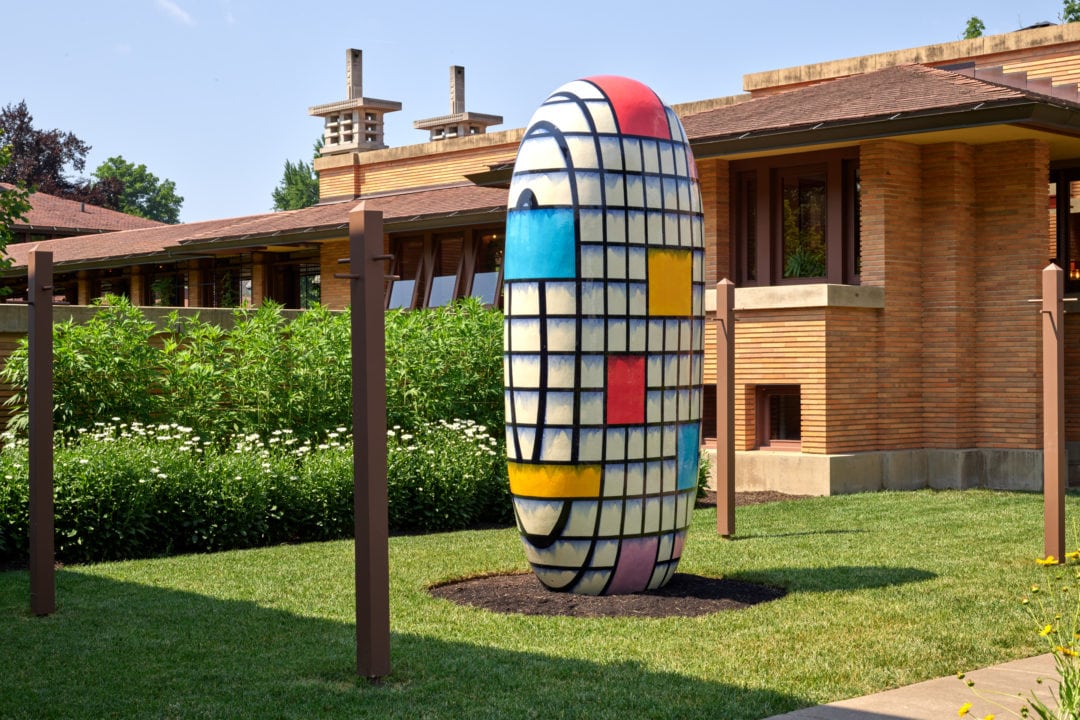
Much of Kaneko’s work similarly embodies the concept of ma, focusing on how the inherent energy of the in-between spaces often makes a work of art feel whole. In terms of his creative process, Kaneko insists that empty space facilitates creativity, encourages dialogue, and is almost always generative in nature—even if what might come of it is perceived by others as a mistake.
A perfect example of ma in action can be seen on Kaneko’s gray sculpture at the front entrance of the Martin House on Jewett Avenue. The piece’s design, which features colored patchworking and chaotic scribbles, is instantly captivating. At the top of the sculpture are small chunks of brick that accidentally broke off of the kiln and fused to the piece during the firing process. Upon noticing this mistake, Kaneko’s students offered to grind off the bricks to give the sculpture a smooth finish, but Kaneko insisted otherwise.
“It’s a phenomenal piece, and that moment is part of its process,” Ott says. “For Kaneko, ma is also about accepting what’s in front of you and allowing it to be something you can live with and interpret.”
Generative social distance
I finish off my tour by strolling through the expansive pergola at the center of the complex, which connects the front entrance hall to the conservatory filled with tropical plants and greenery. The pergola’s open windows offer elevated views of the Martin House grounds with all of Kaneko’s sculptures scattered throughout, and as I watch other visitors take in the installation around me, I can’t help but reflect on how the overarching theme of ma is so fitting within the context of the ongoing COVID-19 pandemic.
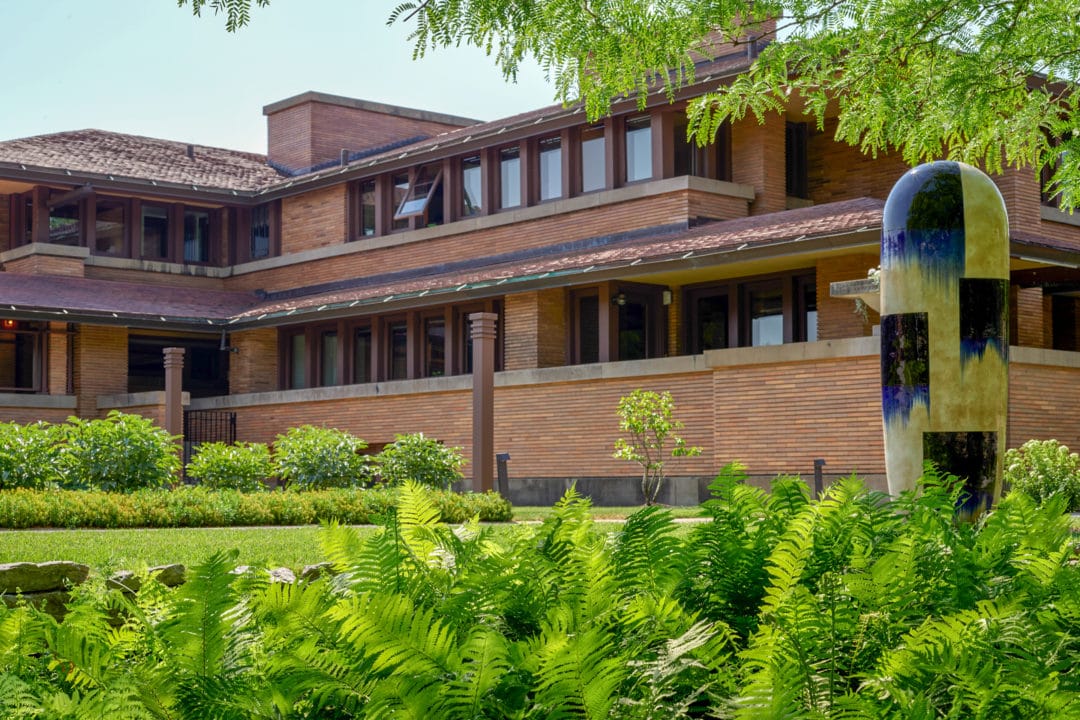
At a time when we’re required to physically distance ourselves from others, the exhibit (safely) brings people together, if even just for an afternoon. And while we all have the freedom to create our own unique experience at the exhibit, we remain connected through our shared desire to consume art and interact with the phenomenal cultural institution within our community.
“That is obviously a coincidence, but it just goes to show that when you find objects and spaces that resonate, there can be new layers of meaning that expose themselves over time,” Ott says in response to my observation. “I think this is an opportunity to acknowledge that the space between us is still active. We can choose to use it to come together rather than push people apart.”
If you go
The Space Between is currently on display and runs through October 2021. Guided tours of the Martin House Complex are available at limited capacities.


